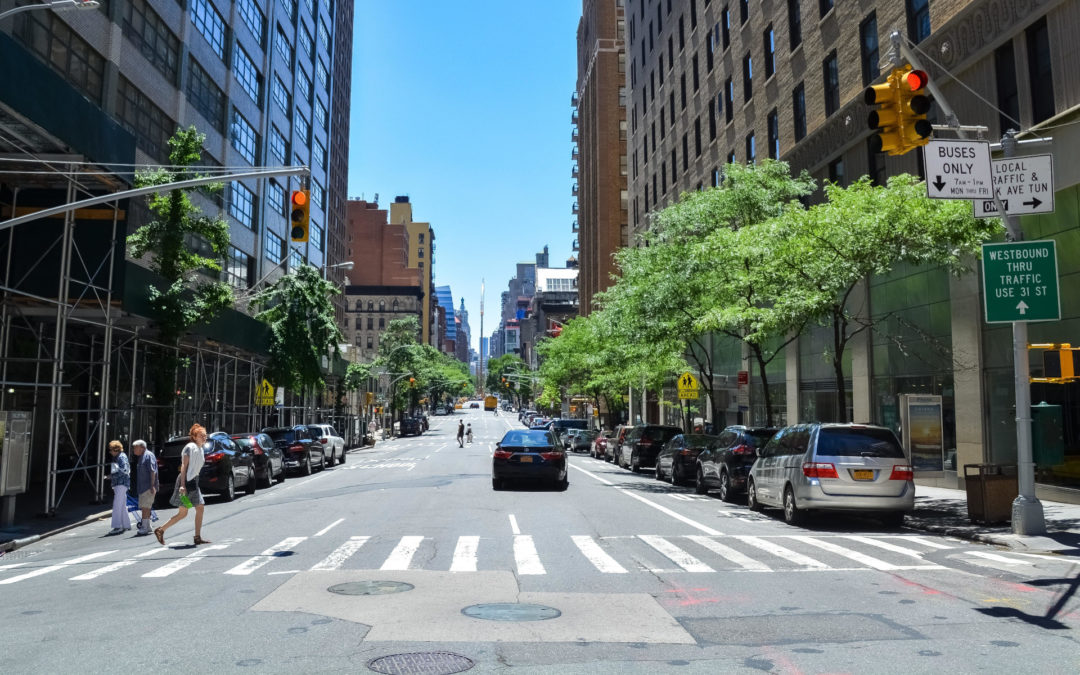Audio beacons are an efficient way to provide more autonomy to blind and visually impaired people. They can easily use public transport.

Vision Zero: A Revolutionary Approach to Road Safety

Vision Zero: a Revolutionary Approach to Road Safety
Looking for inspiration to improve road safety in your city? The Vision Zero movement continues to grow in the world. A few years for an ambitious but achievable goal: 0 traffic death on the roads!
“Because human life is priceless!” This could be the slogan of the international Vision Zero approach. Born in Sweden in 1997, this revolutionary approach to road safety aims to reduce the number of people killed and seriously injured on the roads. How? By placing the responsibility for the risks of accidents on the designers of the road and not only on its users. From Stockholm to Toronto, through the largest cities in the United States, dozens of cities have joined the Vision Zero movement around the world. We invite you to discover this concept of a city primarily centered on respect for human life!
Different Strategies for Road Safety
The Vision Zero approach is based on a simple principle: fatalities are preventable, so they are unacceptable. This is to eliminate all causes of foreseeable accidents during the design or rehabilitation of the road network. The protection of life and human health is non-negotiable and is at the forefront of any other benefit (traffic flow, travel speed, etc.). The designers of the road networks must then make every effort to secure the travel of all, without forgetting the most vulnerable users: children, the elderly, people with disabilities or reduced mobility. While it is unrealistic to want to remove all accidents, it is almost always possible to limit their impact on the physical integrity and health of the victims.
3 Flagship Measures: Reducing Speed, Securing Roads and Raising Awareness Among Stakeholders
To succeed in your Vision Zero project, you should better proceed in stages. Before establishing an action plan, it is necessary to involve all stakeholders under strong and determined leadership. This is the approach adopted by the city of Montreal by forming a dedicated team, with 7 additional hires, and by forming a steering committee bringing together the most influential players in road safety. The next step is to analyze accident data in order to identify the risks and hazards present on the road network. The analysis of these data serves as the basis for the action plan.
Travel Speeds Adapted To The Infrastructure
The higher the speed, the greater the risk of mortality. The maximum speed in a given area is therefore calculated according to the characteristics of this area and adapted to the type of users:
⊗ In areas with motorized vehicles alongside pedestrians, the speed must not exceed 30 km/h (19 mph). This is the limit not to be exceeded for a pedestrian to have a chance of survival in a collision. It is even recommended to lower it to 20 km/h (12 mph). If the maximum permitted speed is greater, the pedestrian routes must be physically separated from the traffic lanes.
⊗ In areas with many intersections where vehicle crossings are possible, the speed must be less than 50 km/h (31 mph). Beyond that, a side impact can be fatal. At 50 km/h (31 mph), pedestrian flows must be protected.
⊗ In less dense traffic areas, with rare intersections, the recommended speed limit is 70 km/h (43 mph).
⊗ Finally, a speed greater than 100 km/h (62 mph) can only be justified when traffic lanes in opposite directions are clearly separated, eliminating any risk of frontal impact.
Measures To Eliminate Road Hazards
Street users should never be at risk of accidents as long as they follow the rules. This is the foundation of Vision Zero philosophy. It is the responsibility of the designers of the road to prevent as much as possible all the dangers. Some examples of measures to put in place:
⊗ Reduce the presence of motorized vehicles in the city;
⊗ Secure pedestrian crossings;
⊗ Upgrade the traffic lights using the most advanced technologies: digital countdown, activation of Accessible Pedestrian Signals for the blind and visually impaired, possibility of increasing the duration of the crossing for people with reduced mobility, etc. ;
⊗ Improve lighting;
⊗ Regulate the traffic of alternative modes and Personal Light Electric Vehicles (PLEVs), such as electric scooters, hoverboards, Segways, skateboards, etc. ;
⊗ Secure school surroundings;
⊗ Improve cycling conditions.
Awareness Actions
By reversing the traditional vision of road safety, the Vision Zero approach implies a change in mindsets among the decision makers and designers of the road and its users.
Thus, the training of road actors fits into most Vision Zero action plans, as in London, New York City, San Antonio or Chicago.
For the benefit of users, the city of Montreal has issued a charter of good conduct on which everyone can commit to road safety.
San Francisco’s LightHouse for the Blind and Visually Impaired has launched its own awareness campaign to remind drivers of the right of way for pedestrians with a white cane or guide dog when crossing the street.
In short
250 stakeholders have already joined the global Vision Zero movement.
Speed reduction, securing roads and educating stakeholders, there are countless measures to make the city safer for all its users.
The success of a Vision Zero project comes first and foremost through political commitment, the coordination of stakeholders and the scrupulous monitoring of actions.
media

Street users should never be at risk of accidents as long as they follow the rules. This is the foundation of Vision Zero philosophy. It is the responsibility of the designers of the road to prevent as much as possible all the dangers.
writer

Lise Wagner
Accessibility Expert
stay updated
Get the latest news about accessibility and the Smart City.
other articles for you

The Ultimate Guide to Accessible Pedestrian Signals
Find out everything there is to know on accessible pedestrian signals: regulations, installation, maintenance, activation modes…

At What Intersections Should You Install Accessible Pedestrian Signals?
Eveything you need to know to best install accessible pedestrian signals! Blind and visually impaired people rely on an efficient system.

Blind and Visually Impaired Pedestrians: What Are Their Difficulties When Crossing the Street?
Blind and visually impaired pedestrians need to remain careful at all times. Even when they actuate the APS to cross the street.

What Is a Phygital Experience and How Can It Improve the Accessibility of Your Venue?
Phygital experiences can make a difference. For people with disabilities, this means more accessibility to services and information.
share our article!
more articles

Intellectual Disability, a Little Known and Multidimensional Disability
Intellectual Disability, a Little Known and Multidimensional DisabilityIntellectual disability, sometimes called mental retardation, affects 1 to 3% of the global population, which represents approximately 6.5 million people in the United States. Who are they? What...

Paratransit Services for People with Disabilities: Yes You Can Reduce Their Costs
Paratransit Services for People with Disabilities: Yes You Can Reduce Their CostsEn tant que directeur général d'une société de transport, vous savez combien il est difficile de fournir un système de transport public fiable à tous les usagers. Et combien il est...

Blind and Visually Impaired Pedestrians: What Are Their Difficulties When Crossing the Street?
Blind and Visually Impaired Pedestrians: What Are Their Difficulties When Crossing the Street? Blind and visually impaired pedestrians can face many obstacles and challenges when they navigate the streets, especially for crossing them. Abled pedestrians cross...

Disability Pride Month: What Is It and Why Is It Important?
Disability Pride Month: What Is It and Why Is It Important?July celebrates Disability Pride Month! A month to support and raise awareness on disability. It gives people with disabilities an opportunity to be seen and heard. Obviously, everybody has their own...
NEVER miss the latest news about the Smart City.
Sign up now for our newsletter.
Unsubscribe in one click. The information collected is confidential and kept safe.
powered by okeenea
The French leading company
on the accessibility market.
For more than 25 years, we have been developing architectural access solutions for buildings and streets. Everyday, we rethink today’s cities to transform them in smart cities accessible to everyone.
By creating solutions ever more tailored to the needs of people with disabilities, we push the limits, constantly improve the urban life and make the cities more enjoyable for the growing majority.












Recent Comments